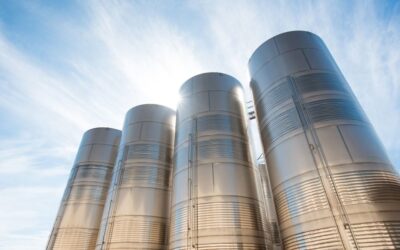BILLING & PAYMENTS | 5 MIN READ
Make a Proactive Billing Strategy Your 2020 Resolution


Small to medium-sized businesses typically run into this problem because they’re not billing or accounting specialists, or have one person handling tax returns, inventory, payroll, P&L, and operational expenses.
Either of the above scenarios create a reactive billing cycle where initial invoices or statements routinely go out late, or too close to the payment due date.
To avoid this, a business needs to identify the flaws in their billing process and begin taking steps to improve or eliminate them.
Automate The Billing Process & Define Your Billing Cycle
Since time is the greatest enemy of accounts receivable, billing should not only be automated, it should be triggered by the date a job is completed or a product is delivered. It’s your business and you should define the billing cycle—not your customers.
For example, the billing cycle for a net-30 customer should begin the same day the service or product is delivered. That means an invoice or statement should be generated and sent out (at least electronically) on that same date.
A friendly, automated payment reminder should be scheduled to arrive 2-4 business days prior to the due date. It’s better to apologize later for sending an invoice reminder to a customer who has already paid, then not sending one at all.
Setting up billing automation may take some time initially, but the impact on your cash flow will be immediate and lasting.
Set Billing Expectations Early & Capture a Payment Method When Possible

This is especially true for healthcare providers, who provide care and then must wait until the insurance claim process completes before billing the patient. With the majority of health plans now including higher deductibles and more of the costs shifted to patients, physicians and hospitals are facing major cash flow problems.
An obvious solution would be to capture and store a patient’s payment method during their medical visit. Since most patients pay their copay at the end of their visit, this is the perfect time to tokenize, or securely store, that payment method when the tap, swipe, or insert their card. You can read more about that here:
A Proactive Billing Strategy Should Include Electronic Communication and Self-Service Payment Options
In general, consumers prefer to pay their bills on their own schedule and through their preferred channel. For some, that might be writing and mailing a check. However, recent studies have shown that the most effective collection strategy includes all of the above. Which includes:
- Paying a live person over the phone
- Making a payment through an automated phone payment (Payment IVR)
- Online Payment (increasingly from a mobile device)
- Pay By Text
- Automated Payments
Could your business benefit from a proactive billing strategy?
Resources
More Articles Related to Patient Communication
Why Siloed Systems Are Costing You: The Case for Platform Consolidation
Discover how siloed communication and payment platforms can lead to inefficiencies, missed revenue, and compliance issues. This article explains why modern agencies need to consolidate operations and manage the entire consumer journey within one unified platform. Intelligent Contacts’ integrated solution combines a Hosted Contact Center and a self-service payment portal to streamline operations, maintain compliance, and improve ROI. Learn how to stay ahead in 2025 by embracing an integrated, consumer-centric approach to communication and collections.”
What the ARM Industry Needs to Know as Federal Student Loan Collections Resume
After a multi-year pause initiated during the COVID-19 pandemic, the U.S. Department of Education has confirmed that collections on defaulted federal student loans will resume on May 5, 2025. This shift carries significant implications for the ARM industry — especially those engaged in debt recovery for educational and government portfolios. With nearly 10 million borrowers expected to be in default and only 38% of borrowers currently in active repayment, the market is poised for a large-scale operational resurgence.
CFPB Revokes Controversial Medical Debt Advisory Opinion in Response to Industry Pushback
In a major win for the accounts receivable and collections industry, the Consumer Financial Protection Bureau (CFPB) announced that it will revoke its controversial advisory opinion on medical debt collection, originally slated to go into effect in January 2025. The decision comes after significant legal challenges and lobbying efforts led by ACA International and other stakeholders.



